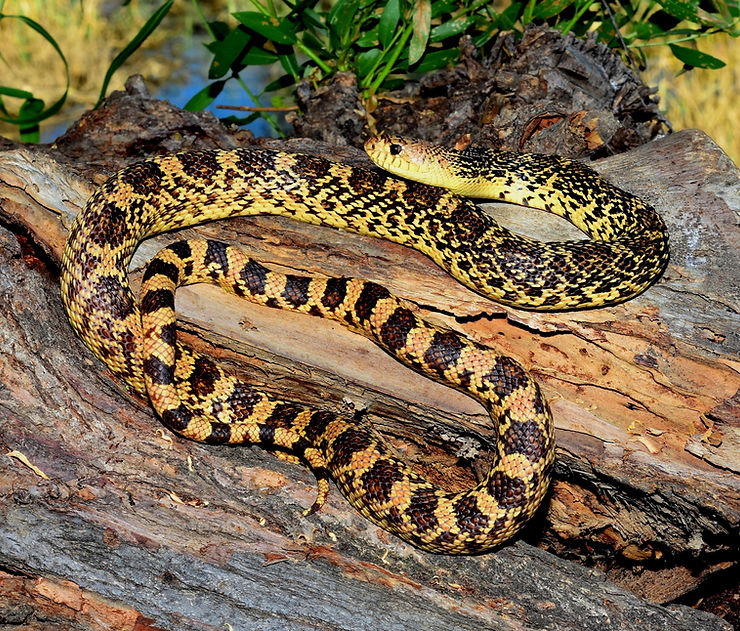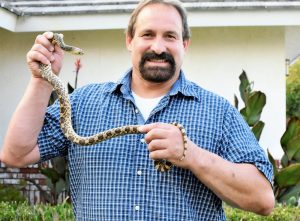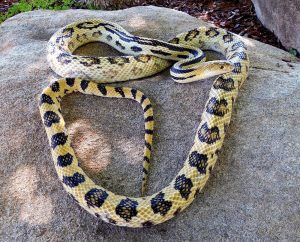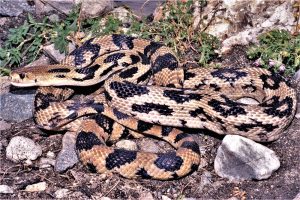Pituophis ruthveni
“Bienville Parish, Louisiana Parent Stock” (2014 One of my snakes)
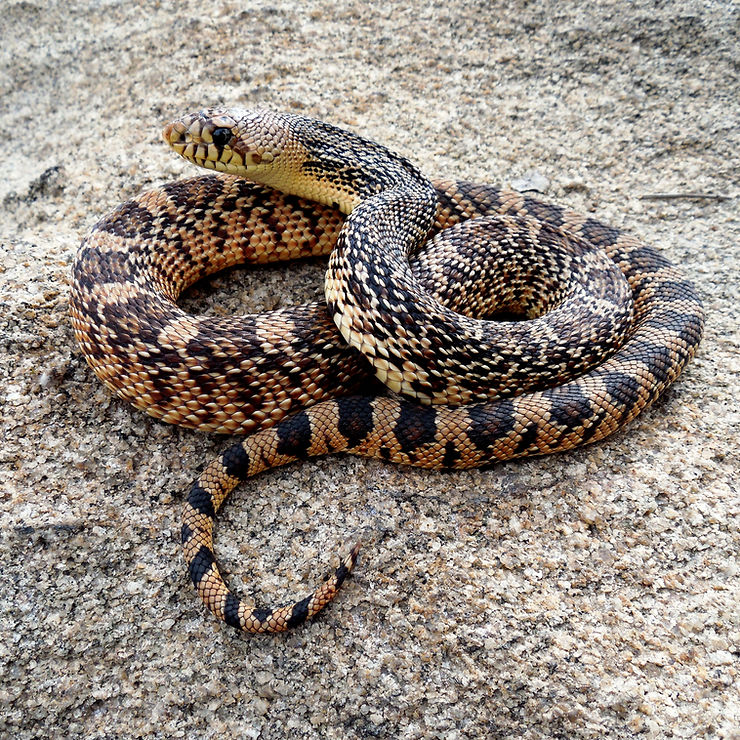
Pituophis ruthveni LOUISIANA PINE SNAKE neonate
“Bienville Parish, Louisiana Parent Stock” (2014 One of my snakes)
Image by Patrick Briggs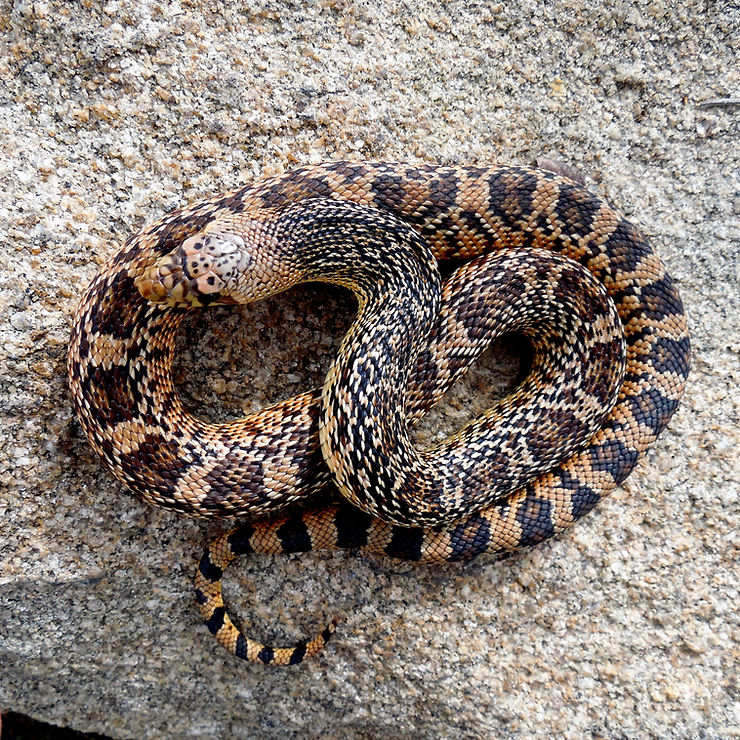
Pituophis ruthveni LOUISIANA PINE SNAKE neonate
Closeup upper head Image by Patrick Briggs
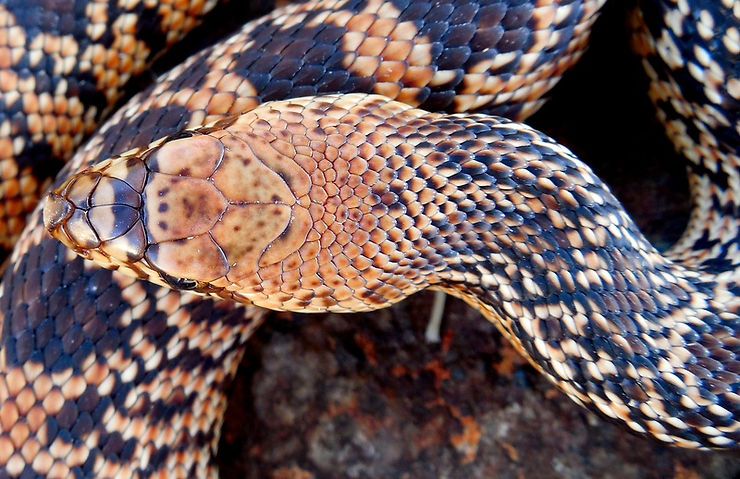
Pituophis ruthveni LOUISIANA PINE SNAKE adult male
“Bienville Parish, Louisiana Parent Stock” (2014 One of my snakes)
Image by Patrick Briggs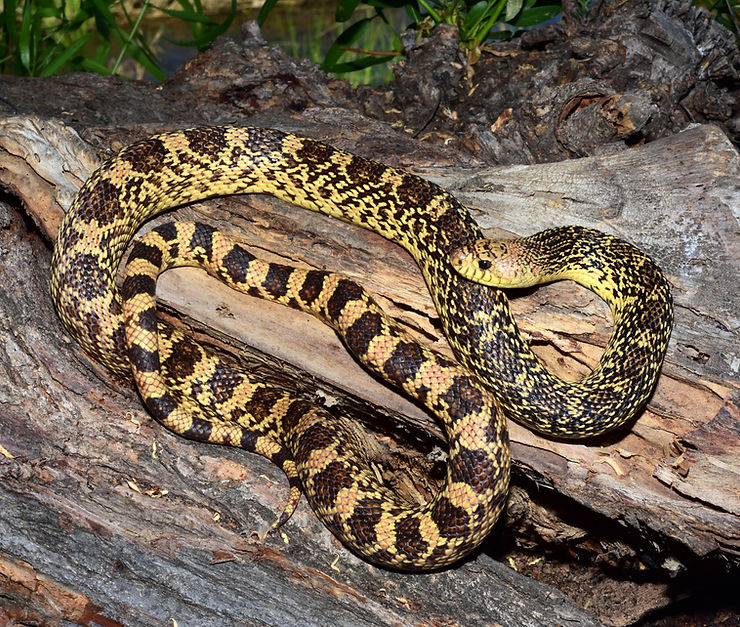
This snake generally is 48-56 inches (122-142 cm) in length, but the largest recorded specimen by 1998 was 701/4 inches (178 cm). Although it is rarely seen in the wild, a few captive animals are being regularly produced from the breeding stock available in zoos, in private collections and the Forest Service. In the past, greedy breeders in the pet trade have interbred with other pine snake forms and deceitfully called them RUTHVENI to pass them off as pure Louisiana pine snakes and collect more cash.
The Louisiana pine snake is a rare form of pine snake only indigenous to western central Louisiana and eastern Texas. There is another form of pine snake that is also found Lousiana in the extreme southeast, in the Washington Parish region, but it is a different species known as the Black pine snake Pituophis melanoleucus lodingi.
Pat Briggs mid 90s carries Drymarchon couperi a Florida male Indigo Snake
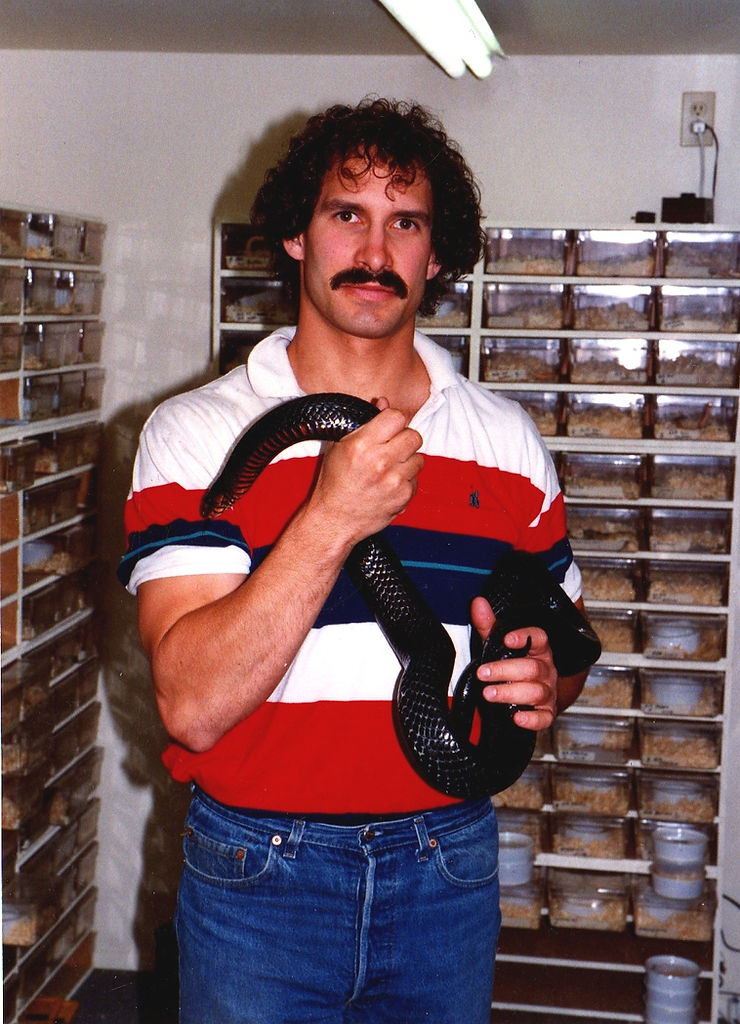
IDENTIFICATION:
Louisiana pine snakes as adults are muscular powerful constrictors about 4 to 5 feet in length. They have enlarged rostal or snout scales. When they are not upset and widening the head as a defense gesture, the widest part of the jaws of the head is only slightly wider than the neck. The ground color may be buff or a color similar to the yellowish tone of a lion, but many times, it is ashy grey. Just behind the dappled or smudgy upper neck are 28-42 dark brown vertebral blotches or spots that are similar in color, but with the markings or pattern visibly different from one end to another. The neck region is less distinct, because the dark color suffuses and blends to obscure the lighter coloration. Towards the mid-body, the dark markings become more and more distinct and contrasting or separated, and sometimes, are reddish toward the tail yet reduced in marking thickness. Also, nearest the tail region, the ground color may become more yellow. Futhermore, the snout generally comes to an extreme point, and the snout scale (rostral) is elevated or re-enforced above the surrounding scales for added strength for pushing sand and other materials when burrrowing. Its head is only slightly marked with some small dots and a faded bar in front and between the orbitals above and a faint bar sometimes runs from behind each eye angling down toward the rear upper labials. The upper labials and some of the lower labial scale sutures may also be outlined with brown or black. The ventrals never appear to be immaculate, but are intermediately blotched with brown or black and where the sides meet the belly, so there usually is no true checkered belly pattern. Degrees of black or the intensity of pigmentation varies throughout the species and different individuals within its geographical range. Even so, Louisiana pine snakes from Louisiana tend to be much lighter than those of Texas.
Pituophis ruthveni LOUISIANA PINE SNAKE neonate
“Bienville Parish, Louisiana Parent Stock” (2014 One of my snakes)
Image by Patrick Briggs
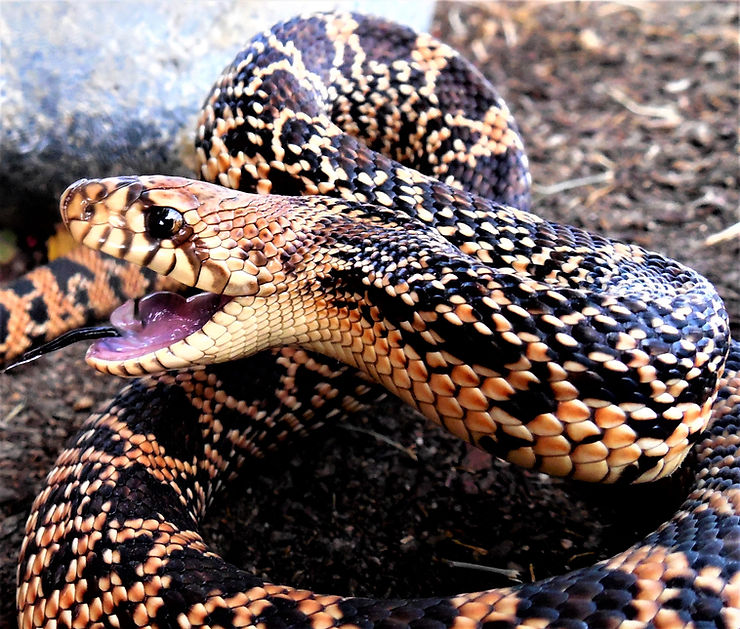
Pituophis ruthveni LOUISIANA PINE SNAKE neonate
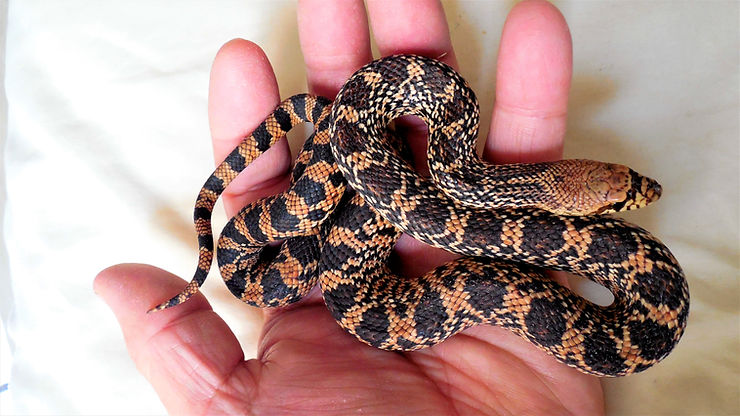
Pituophis ruthveni LOUISIANA PINE SNAKE adult male
Image by Patrick Briggs, Courtesy Dick Dunn
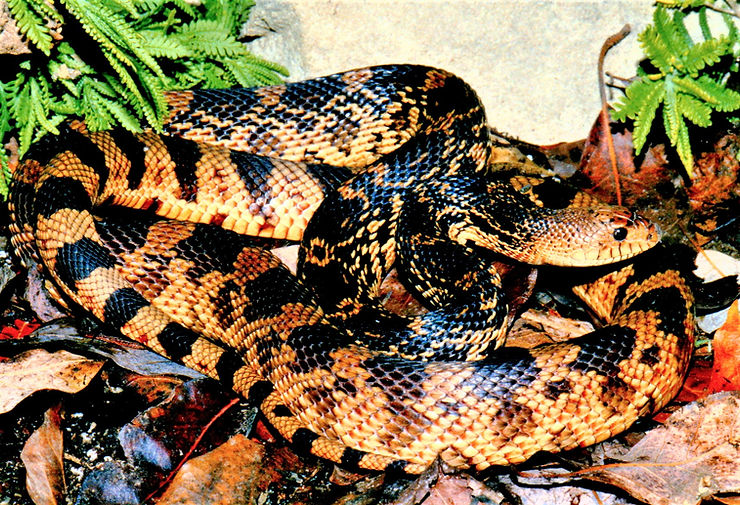
Regarding scuttelation or scale arrangement, like most Pituophis, there are usually 4 prefrontal scales and azygous scales may sometimes bring up the count, or fused wider scales may bring down the prefrontal count. The rostral scale is exceptionally large and raised above adjacent scales, and there are usually 8 or 9 supralabials and from about 10-15 (generally 14) infralabials. The anal scale is single or undivided. There are 27-33 rough and heavily keeled scales dorsally becoming smoother to no keels toward the belly. (In males, there may be 210-230 ventrals, and females, 213-229) and males may possess 51-64 caudal scales, while females will have a lesser amount of about 49-55. Ruthveni also have one preocular and from 3-4 postoculars which are sometimes fused with each other or other scales.
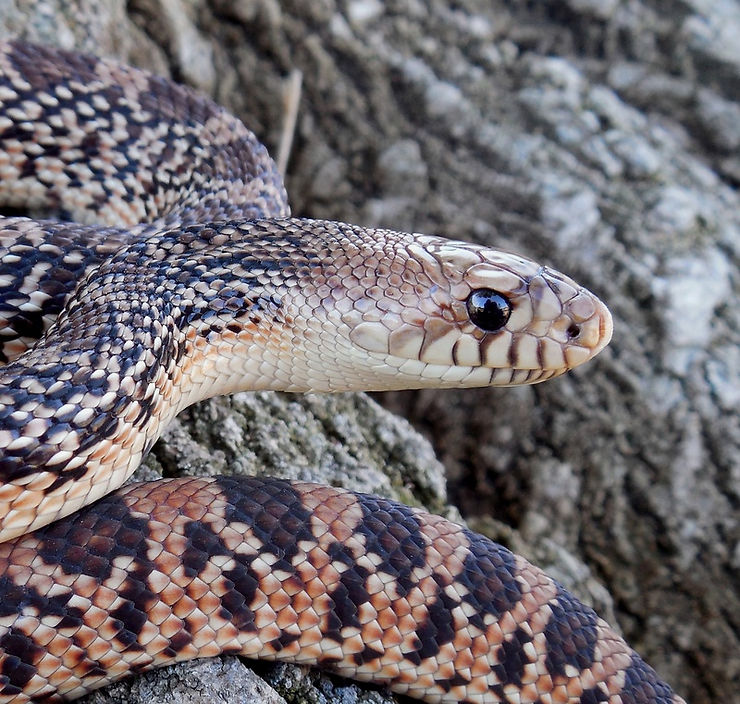
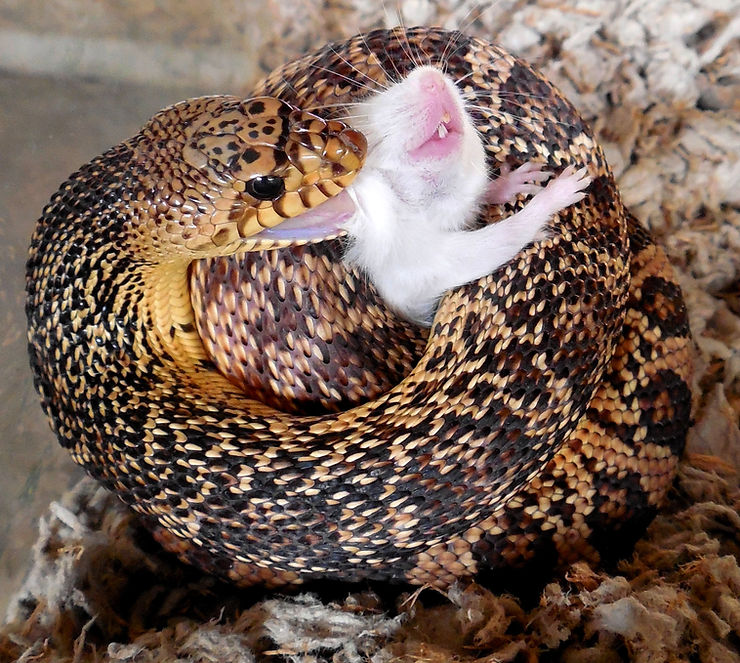
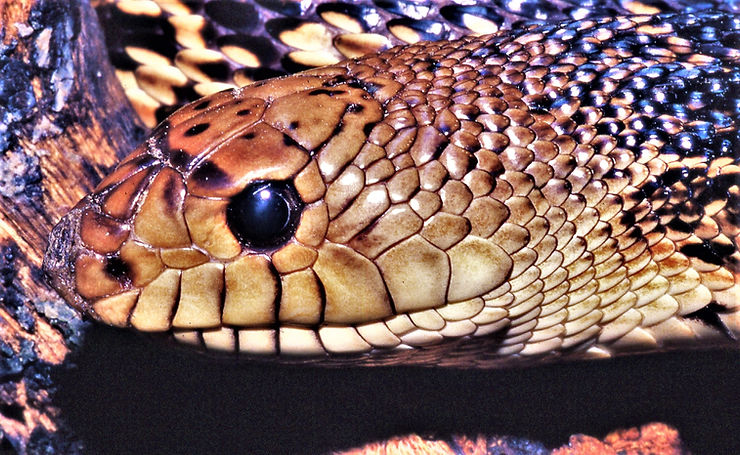
Pituophis ruthveni x melanoleucus hybrid SNAKE LOUISIANA & NORTHERN PINE SNAKE
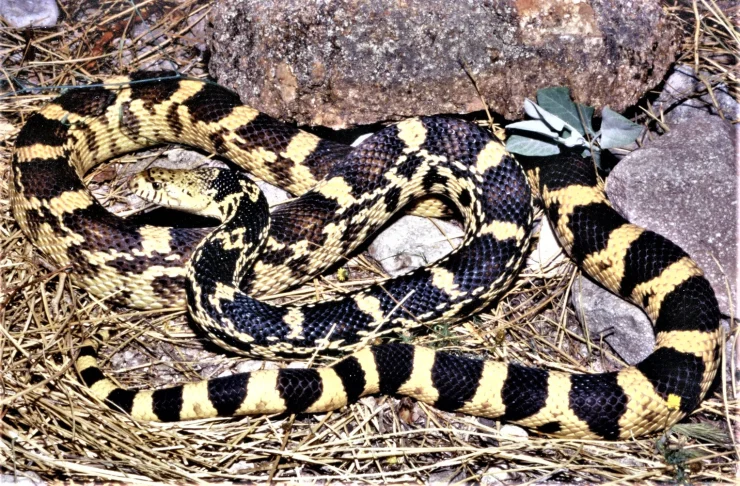
Pituophis ruthveni LOUISIANA PINE SNAKE neonate left side head study
“Bienville Parish, Louisiana Parent Stock” (2014 One of my snakes)
Image by Patrick Briggs
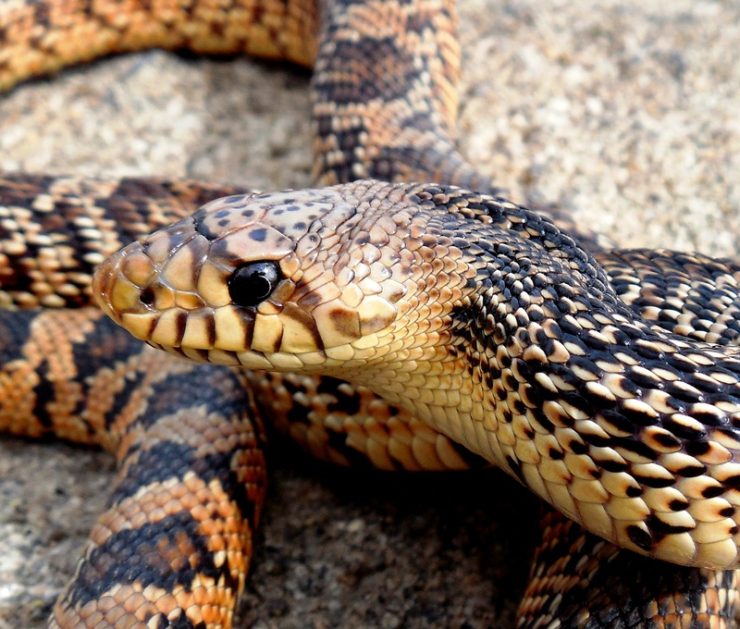
STATUS: In the state of Louisiana, it is classified as imperiled-to-vulnerable, and in the state of Texas, it is listed as “threatened” and therefore, protected from direct harm and unauthorized collection. Also Texas Parks and Wildlife Department has also listed it as endangered.
Endangered in Texas; imperiled in Louisiana
Candidate for federal endangered species listing (no formal Federal protection under the Endangered Species Act)
Endangered on the International Union for the Conservation of Nature (IUCN) Red List
of Endangered Species
· We know that demise of this species is partly due to urban development, agricultural practices, roads, and industrial development, and even suppression of natural fires all which contribute to habitat loss and fragmentation of this and many other species. There are many other factors that have impacted populations. However, the loss of the native longleaf and shortleaf pine ecosystem seems to be the most significant impact to populations of the Louisiana pine snake. Its low fucundity doesn’t help the situation any better. Perhaps, responsible captive breeding can help bring up the numbers as the states make efforts to restore these habitat areas in the future. · On May 1, 2012 USDA Forest Service, U.S. Fish and Wildlife Service, Louisiana Department of Wildlife and Fisheries, the Memphis Zoo, and other partners released seven young Louisiana pine snakes on a restored longleaf pine stand in the Kisatchie National Forest in Louisiana. See the article below.
· http://www.srs.fs.usda.gov/compass/2012/05/08/taking-americas-rarest-snake-back-to-the-woods/
· Recovery Measures:
· According to a report from the U.S. Fish and Wildlife Service: ” In March of 2004, a Candidate Conservation Agreement was developed and approved in order to identify and establish management protection for the pine snake on Federal land by protecting known populations and habitat reducing threats to its survival, maintaining its ecosystem and restoring degraded habitat. This agreement was intended to establish a framework for cooperation and participation in the pine snake=s protection, conservation, and management within the boundaries of the Angelina and Sabine National Forests of Texas, Kisatchie National Forest in Louisiana, and Fort Polk Military Reservation in Louisiana. This agreement was implemented by the U.S.D.A. Forest Service; Fort Polk, U.S. Army, Department of Defense(Fort Polk); Region 2 and Louisiana Department of Wildlife and Fisheries. Restoration measures will include prescribed burning, thinning, and replanting of long-leaf pine forest.”
· See this Online Article by U.S. Fish and Wildlife Service: http://www.fws.gov/southwest/clearlakees/pdf/pinesnake.pdf
· The Lousiana pine snake needs fire to survive:
http://www.srs.fs.usda.gov/news/66
·
· Louisiana Pine Snakes in Pine Forests Click on excellent article below by Wendee
Holtcamp
. http://www.fseee.org/forest-magazine/your-national-forests/1002467-louisiana-pine-snake
· “Pocket gophers create extensive burrow systems that provide shelter for dozens of species, from frogs to tortoises to salamanders to insects. The gophers eat roots and tubers, and, when necessary, try to escape from what Rudolph found was their most formidable predator, the Louisiana pine snake. The snakes play an important ecological role. They occasionally eat moles, turtle eggs and other small rodents, and as the subterranean-living reptiles slither underground, they keep abandoned gopher burrows open, which in turn provide habitat for other creatures.”
·
· Here’s a video of a wild adult Louisiana pine snake in a forest in east Texas!
· http://www.youtube.com/watch?v=zOCH92EVAy4
· Live zoo specimens http://www.louisianaherps.com/louisiana-pinesnake-pituoph.html
Javier A. Rodriguez-Robles and Jose M. De Jesus-Escobar of the Museum of Vertebrate Zoology and Department of Integrative Biology at the University of California in Berkeley, California have worked with most species of Pituophis at the molecular level. Their findings indicate that some ruthveni are more closely related to sayi than other ruthveni. This is very interesting. Even so, they report “Nonetheless, ruthveni is an allopatric taxon diagnosable from its closest relatives by a combination of morphometric characters, and because it is likely that at least some of these traits are independent and genetically-inherited, we interpret this as evidence that ruthveni has attained the status of independent evolutionary lineage, despite the fact that it retains strong genetic affinities with sayi “
Unknown credit “Releasing wild Pituophis ruthveni”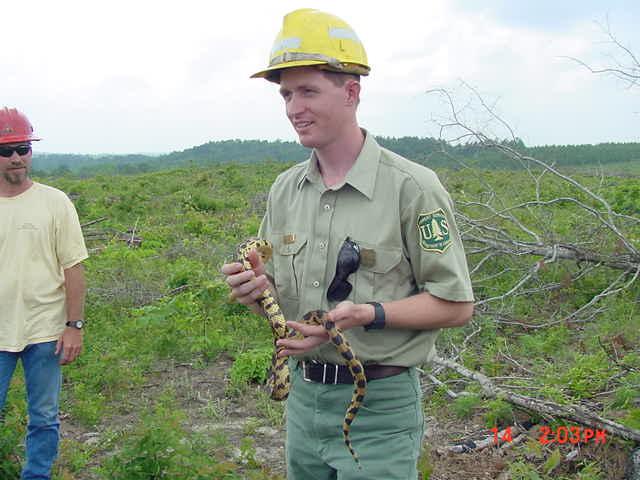
unknown credit Pituophis ruthveni LOUISIANA PINE SNAKE wild rescue release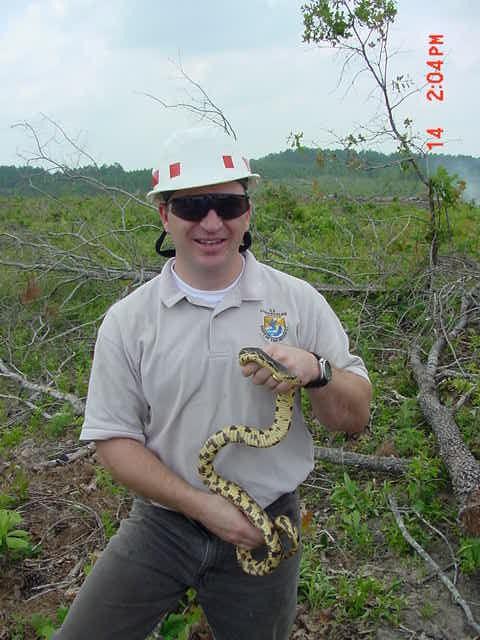
Pituophis ruthveni LOUISIANA PINE SNAKE closeup my adult male

SCUTELATION:
Supralabials 8-9
Preoculars 1
Pituophis ruthveni LOUISIANA PINE SNAKE neonate upper head study
Image by Patrick Briggs
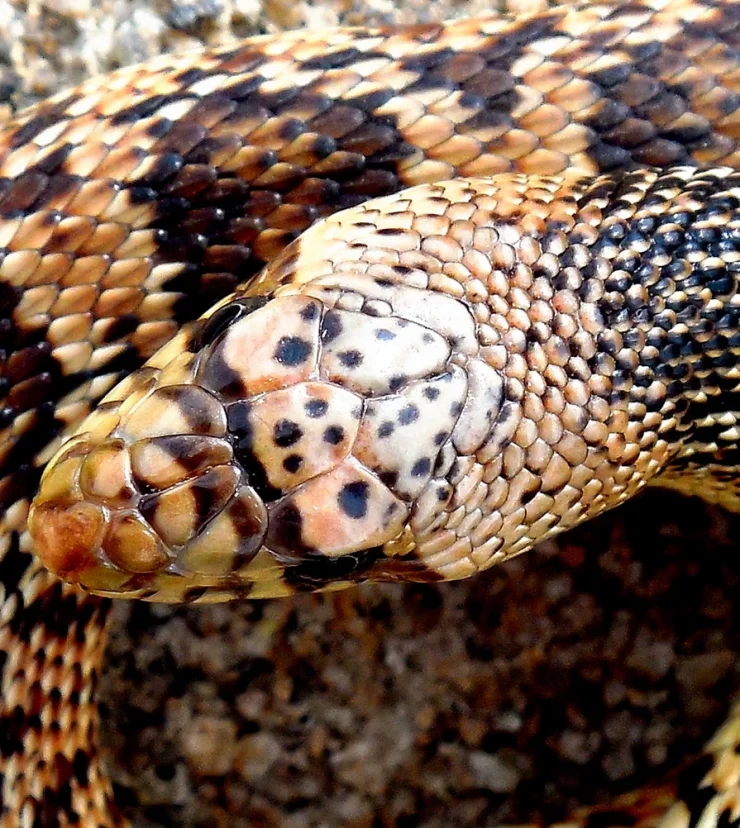
Pituophis ruthveni LOUISIANA PINE SNAKE neonate
Image by Patrick Briggs
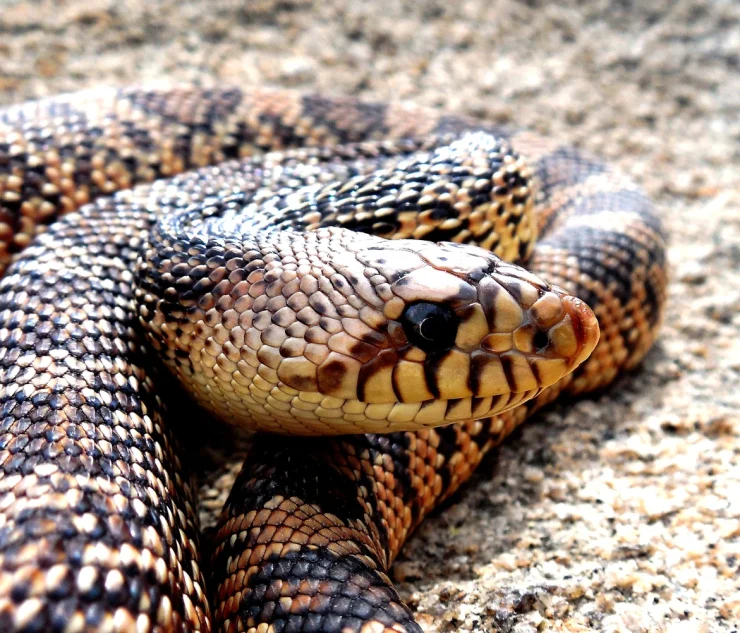
See this image of the Louisiana Pine Snake:
Louisiana pine snakePituophis ruthveni


